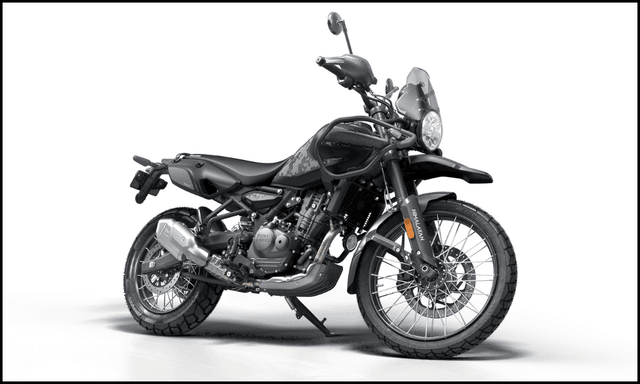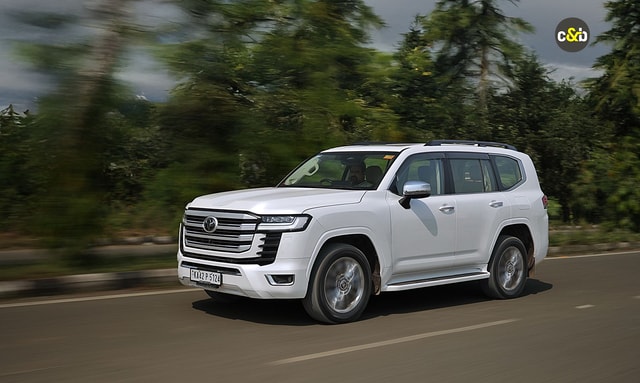Smart Charging May Be Key To Saving Power Grid In World Of EVs

As electric vehicle (EV) sales rise, the big question for power grid operators, charging companies and governments is how to run tens of millions of vehicles without crashing local networks or spending billions on grid upgrades. The answer: smart charging. Simply put, smart charging software allows EV owners to plug in during expensive peak hours, without the vehicle drawing power until cheap off-peak hours. This eases strain on the electric grid, makes better use of renewable energy and saves drivers money.
Without it, millions of EV owners plugging in after work - auditing firm EY estimates Europe will have 65 million EVs by 2030 and 130 million by 2035 - could overload local grids, causing blackouts.
"The shift to electric will be nigh on impossible without smart charging," Chris Pateman-Jones, CEO of British EV charger company Connected Kerb, told Reuters while demonstrating a pilot project on public chargers in Hackney, a London borough.
Using Connected Kerb's smartphone app you can set your charging speed, charge time and exact price down to a low, slow "Eco" rate of 19 pence (26 U.S. cents) per kilowatt.
"It's so much cheaper and simpler," said Ged O'Sullivan, a 65-year-old pub owner who cut his plug-in hybrid's charging bill by 30% with Connected Kerb.
Smart charging for public chargers is a significant challenge because so few are available for people who cannot charge at home because they park on the street.
According to a report from EY and Eurelectric, Europe alone will need 9 million public chargers by 2035, up from 374,000 today.
The near future should also bring "bidirectional" or "vehicle-to-grid" charging, where millions of EV owners could sell their EV batteries' juice back to grid operators during peak hours.
Even in Britain where smart charging at home is widely available, many EV owners are unaware it exists, according to Britain's energy regulator, Ofgem. In the United States, only a tiny fraction of utilities offer it, according to utilities group the Smart Electric Power Alliance.
And few cars today beside Renault and Hyundai's upcoming Ioniq model are capable of bidirectional charging - though more are coming.
"Most cars, at this point, do not support this bidirectional charging yet," said Robin Berg, CEO of We Drive Solar, which has supplied hundreds of bidirectional chargers for a pilot project in the central Dutch city of Utrecht and worked with Renault SA and Hyundai Motor Co on their vehicles. "Other carmakers will follow."
Nearly 20% of new cars sold in the Netherlands and almost 12% in Britain in 2021 were fully electric.
State support has put Norway at the forefront of electrification, where EVs made up almost three-quarters of sales in the capital Oslo. Some local substations were built in the 1950s and without smart charging Oslo would need massive, costly grid upgrades.
"To handle this we need smart charging solutions because we don't want to over-invest in the grid," said Sture Portvik, who heads Oslo's charging infrastructure efforts.
Connected Kerb aims to have 190,000 UK on-street chargers by 2030, enabling it to predict consumer charging patterns for grid operators and offer lower rates when the available renewable energy is abundant, said Pateman-Jones.
"Today when there's too much wind on the grid, wind farms are told to turn the wind turbines off," he said. "With smart charging we can pull more of that power."
Some UK energy providers already offer low off-peak rates for home smart charging, but few EV owners use them.
"The perception is smart charging at home is a done deal," said Charlie Cook, CEO of Rightcharge, a UK firm that helps EV owners find low tariffs. "But the reality is awareness of these tariffs is surprisingly low."
Rightcharge estimates smart charging could save UK drivers 10 billion pounds ($13.5 billion) by 2030.
British car dealer network Lookers guides EV buyers to Rightcharge's website to check their options.
Lookers' business development director, Andrew Hall, said "early adopter" EV buyers are "pretty savvy about smart charging."
"But that is changing as EV sales rise," he added.
Utilities group the Smart Electric Power Alliance estimates only 50 out of 3,000 U.S. utilities offer smart charging.
EV charging company ChargePoint's U.S. chargers can all smart-charge, but it wants more utilities to offer it.
"We see a lot of positive response from customers when their utility is offering those rates," said Anthony Harrison, ChargePoint's North American head of utility partnerships.
Charging provider Blink Charging Co has one set rate until smart charging is widely available.
"We decided to keep it simple for our customers," said Blink CEO Michael Farkas.
Bidirectional charging may be crucial.
"The whole idea behind bidirectional charging is to balance the grid," said We Drive Solar's Berg, who estimates a fully charged EV can power the average home in the Netherlands for a week.
Serge Colle, EY's global energy resources leader, said smart and bidirectional charging are better than "horrendously expensive" power grid upgrades.
"We can't possibly open up streets quickly enough to add more copper and do the necessary reinforcement," Colle said.
Regulator Ofgem estimates that peak power reductions from smart and bidirectional charging by 2050 could match "10 Hinkley Point C Nuclear Plants" - a two-reactor plant under construction in England.
The U.S. market has more than 10 vehicle-to-grid pilot projects using school buses under way.
California-based vehicle-to-grid company Nuvve Holding Corp has formed Levo, a joint venture with private equity firm Stonepeak - which chipped in $750 million - to enable EV fleet owners to sell power to utilities.
"Because our customers are able to generate revenue we're able to reduce the total cost of ownership for those vehicles, at times completely cost-neutral," said Nuvve CEO Gregory Poilasne.
Charger makers like Brisbane, Australia-based Tritium Dcfc Ltd are also developing bidirectional chargers.
CEO Jane Hunter said Tritium will launch a bidirectional, fast-charging wall unit in 2023 for fleets and homeowners.
More automakers are embracing bidirectional charging. Ford Motor Co has partnered with solar power company Sunrun Inc to use its F-150 Lightning pickup truck to power homes.
But Oslo has invested extra money in pilot projects for bidirectional chargers because it believes in the concept. So far, however, it has been disappointed that more carmakers have not yet introduced vehicles that can feed power back into the grid.
"The limitations for bidirectional charging has been the car producers," infrastructure chief Portvik said. "The big carmakers have to step up."
(This story has not been edited by NDTV staff and is auto-generated from a syndicated feed.)
Trending News
 1 min readNew KTM RC 160 Spotted Testing
1 min readNew KTM RC 160 Spotted Testing
Latest News
 Jafar Rizvi | Nov 21, 2025Motoverse 2025: Royal Enfield Bullet 650, Flying Flea S6 Make India DebutPrices for the Bullet 650 are expected to be announced in the coming months.3 mins read
Jafar Rizvi | Nov 21, 2025Motoverse 2025: Royal Enfield Bullet 650, Flying Flea S6 Make India DebutPrices for the Bullet 650 are expected to be announced in the coming months.3 mins read car&bike Team | Nov 21, 2025Royal Enfield Himalayan 450 Mana Black Launched At Rs 3.37 LakhThe Mana Black trim costs Rs 17,000 more than the Hanle Black and mainly adds a new colour scheme, along with a set of extra accessories.1 min read
car&bike Team | Nov 21, 2025Royal Enfield Himalayan 450 Mana Black Launched At Rs 3.37 LakhThe Mana Black trim costs Rs 17,000 more than the Hanle Black and mainly adds a new colour scheme, along with a set of extra accessories.1 min read car&bike Team | Nov 21, 2025Skoda Auto Volkswagen India Crosses 2 Million Unit Production MilestoneThe Indian arm of the VW Group commenced local manufacturing of cars back in 2001.1 min read
car&bike Team | Nov 21, 2025Skoda Auto Volkswagen India Crosses 2 Million Unit Production MilestoneThe Indian arm of the VW Group commenced local manufacturing of cars back in 2001.1 min read Jaiveer Mehra | Nov 21, 2025Genesis Magma GT Concept Previews Future Mid-Engine Halo CarFuture halo car to also enter GT racing competition.1 min read
Jaiveer Mehra | Nov 21, 2025Genesis Magma GT Concept Previews Future Mid-Engine Halo CarFuture halo car to also enter GT racing competition.1 min read Jaiveer Mehra | Nov 21, 2025Hyundai Crater Off-Road SUV Concept Unveiled At LA Auto Show 2025Hyundai says the boxy SUV concept ‘explores the next evolution’ of its more rugged XRT model series.1 min read
Jaiveer Mehra | Nov 21, 2025Hyundai Crater Off-Road SUV Concept Unveiled At LA Auto Show 2025Hyundai says the boxy SUV concept ‘explores the next evolution’ of its more rugged XRT model series.1 min read Shams Raza Naqvi | Nov 20, 2025Don’t Need To Protect Image And Constraints: Lexus President Takashi WatanabeIn a ringside chat with car&bike at this year's Japan Mobility Show, Lexus International President Takashi Watanabe lists out what’s in store for the brand in the years to come.1 min read
Shams Raza Naqvi | Nov 20, 2025Don’t Need To Protect Image And Constraints: Lexus President Takashi WatanabeIn a ringside chat with car&bike at this year's Japan Mobility Show, Lexus International President Takashi Watanabe lists out what’s in store for the brand in the years to come.1 min read
 Janak Sorap | Nov 19, 2025Hero Xpulse 210 Vs Kawasaki KLX 230 Comparison Review: Dual-Sport DilemmaWith a price difference of just Rs 12,000, which of the two dual-sport motorcycles is meant for you?1 min read
Janak Sorap | Nov 19, 2025Hero Xpulse 210 Vs Kawasaki KLX 230 Comparison Review: Dual-Sport DilemmaWith a price difference of just Rs 12,000, which of the two dual-sport motorcycles is meant for you?1 min read Jaiveer Mehra | Nov 17, 20252025 Toyota Land Cruiser 300 Review: Beast From The EastThe Land Cruiser name may have a long and storied history, but does it fit the bill for an Rs 2 crore-plus SUV in India?13 mins read
Jaiveer Mehra | Nov 17, 20252025 Toyota Land Cruiser 300 Review: Beast From The EastThe Land Cruiser name may have a long and storied history, but does it fit the bill for an Rs 2 crore-plus SUV in India?13 mins read Seshan Vijayraghvan | Nov 17, 2025Kia Syros 1.0 Turbo Petrol: 6000 km Long-Term Review – Final Report!I lived with the Syros for more than 6000 km, over 3 months, and in this final report, I am going to talk about the Pros, the Cons, and everything in between.1 min read
Seshan Vijayraghvan | Nov 17, 2025Kia Syros 1.0 Turbo Petrol: 6000 km Long-Term Review – Final Report!I lived with the Syros for more than 6000 km, over 3 months, and in this final report, I am going to talk about the Pros, the Cons, and everything in between.1 min read car&bike Team | Nov 13, 2025Numeros n-First First Ride Review: Motorbike-Inspired EV ScooterWe test rode the n-First i-max+ in busy Bengaluru roads recently. It’s ability to tackle city roads well and comfortable seats make it a scooter worth a check. Read on to know if it makes sense for you to consider buying it.3 mins read
car&bike Team | Nov 13, 2025Numeros n-First First Ride Review: Motorbike-Inspired EV ScooterWe test rode the n-First i-max+ in busy Bengaluru roads recently. It’s ability to tackle city roads well and comfortable seats make it a scooter worth a check. Read on to know if it makes sense for you to consider buying it.3 mins read Preetam Bora | Nov 12, 2025Royal Enfield Nomad WP Mid Ankle Riding Boots ReviewThe Royal Enfield Nomad Waterproof mid-ankle boots have robust construction, good fit and a waterproof liner as well. But are they worth Rs. 7,500 or should you give them a pass?4 mins read
Preetam Bora | Nov 12, 2025Royal Enfield Nomad WP Mid Ankle Riding Boots ReviewThe Royal Enfield Nomad Waterproof mid-ankle boots have robust construction, good fit and a waterproof liner as well. But are they worth Rs. 7,500 or should you give them a pass?4 mins read
































































































































